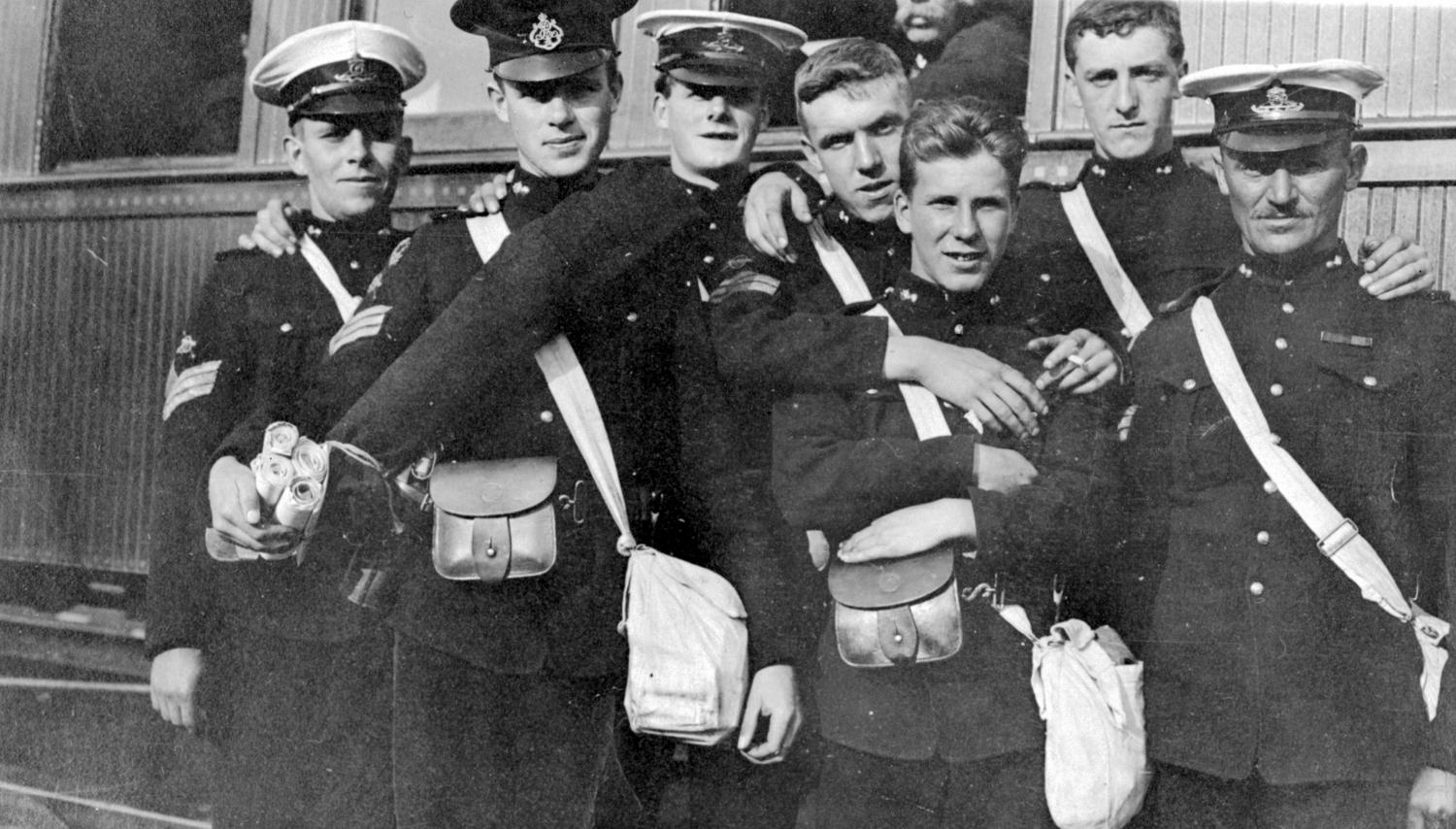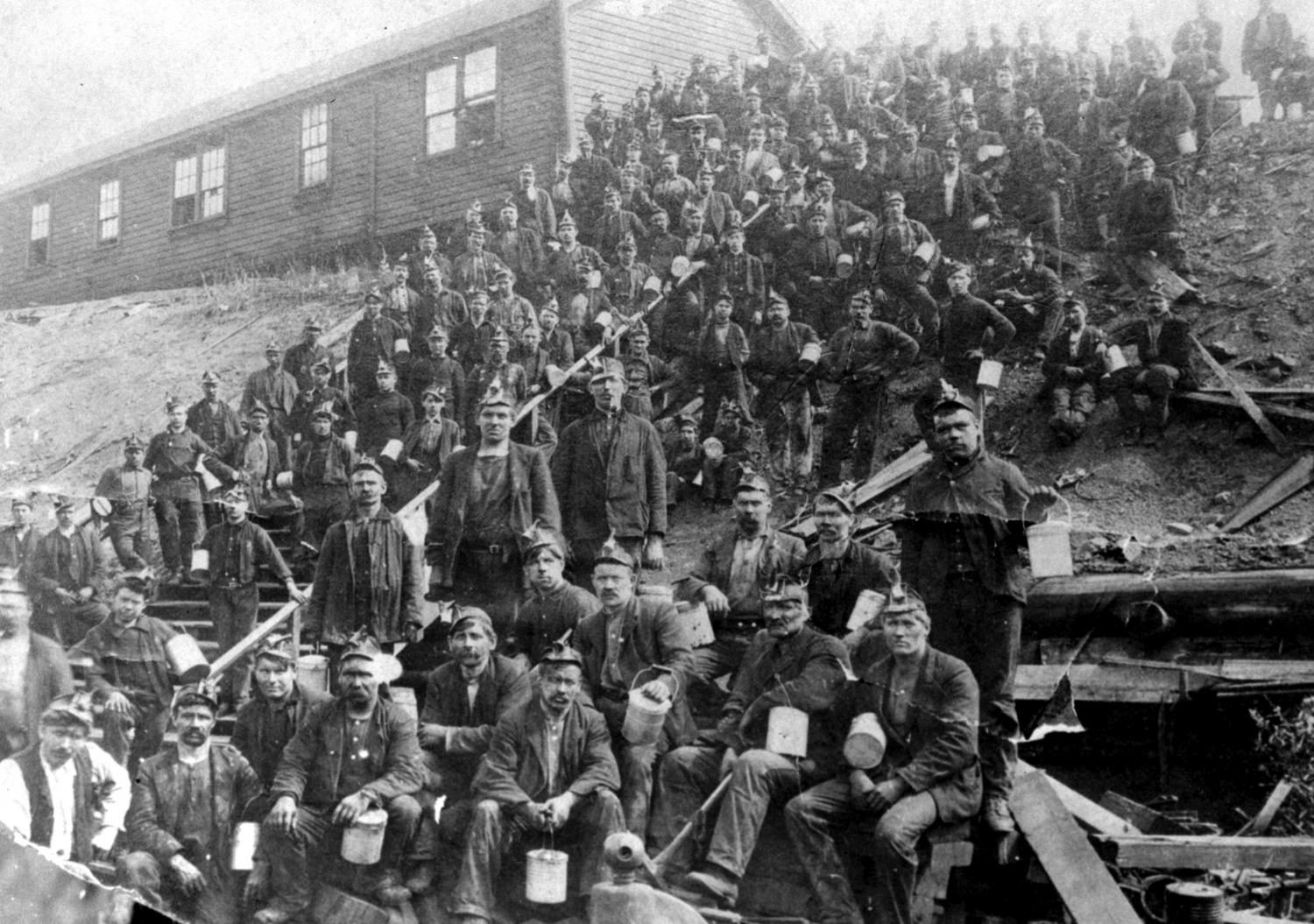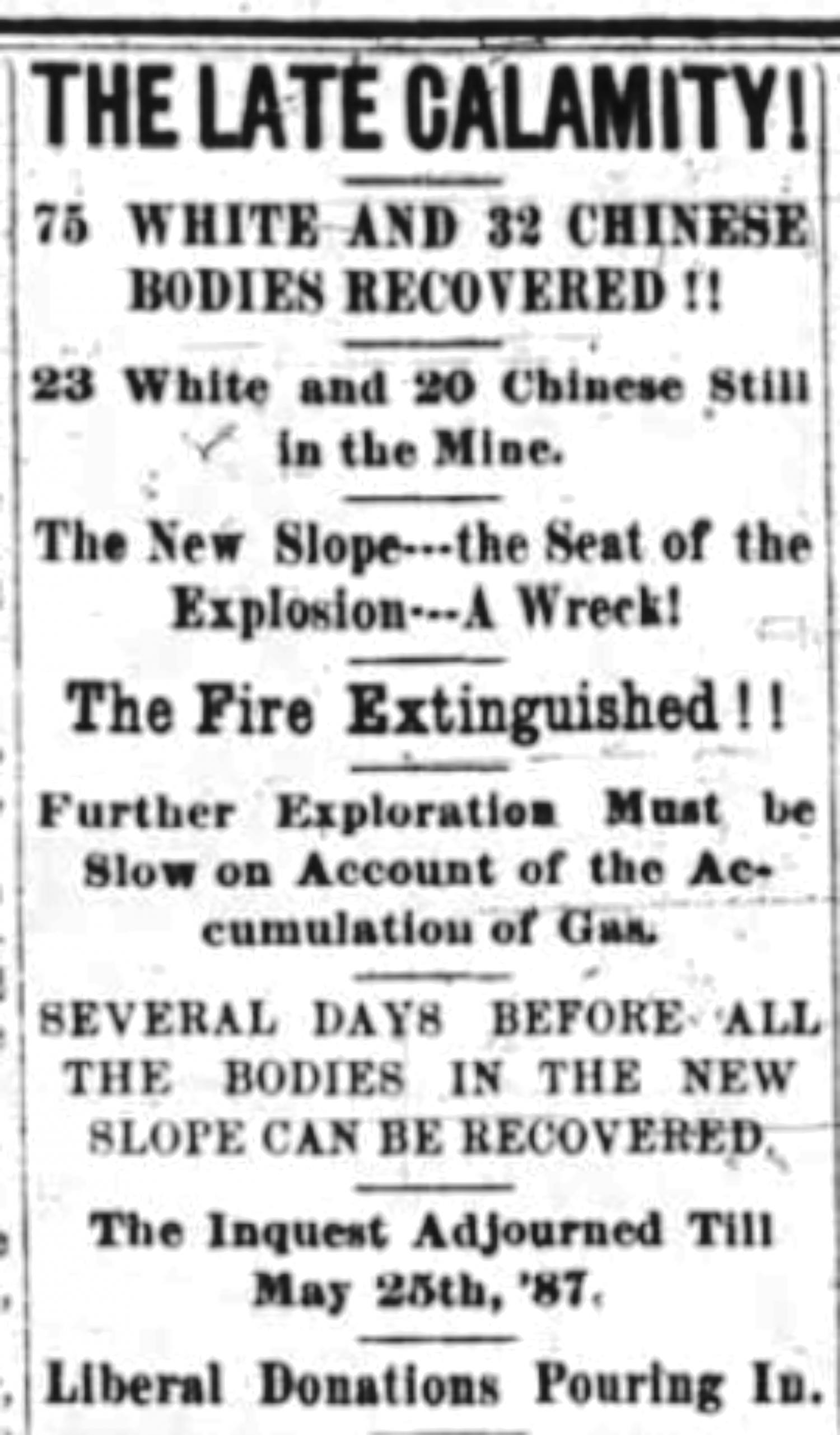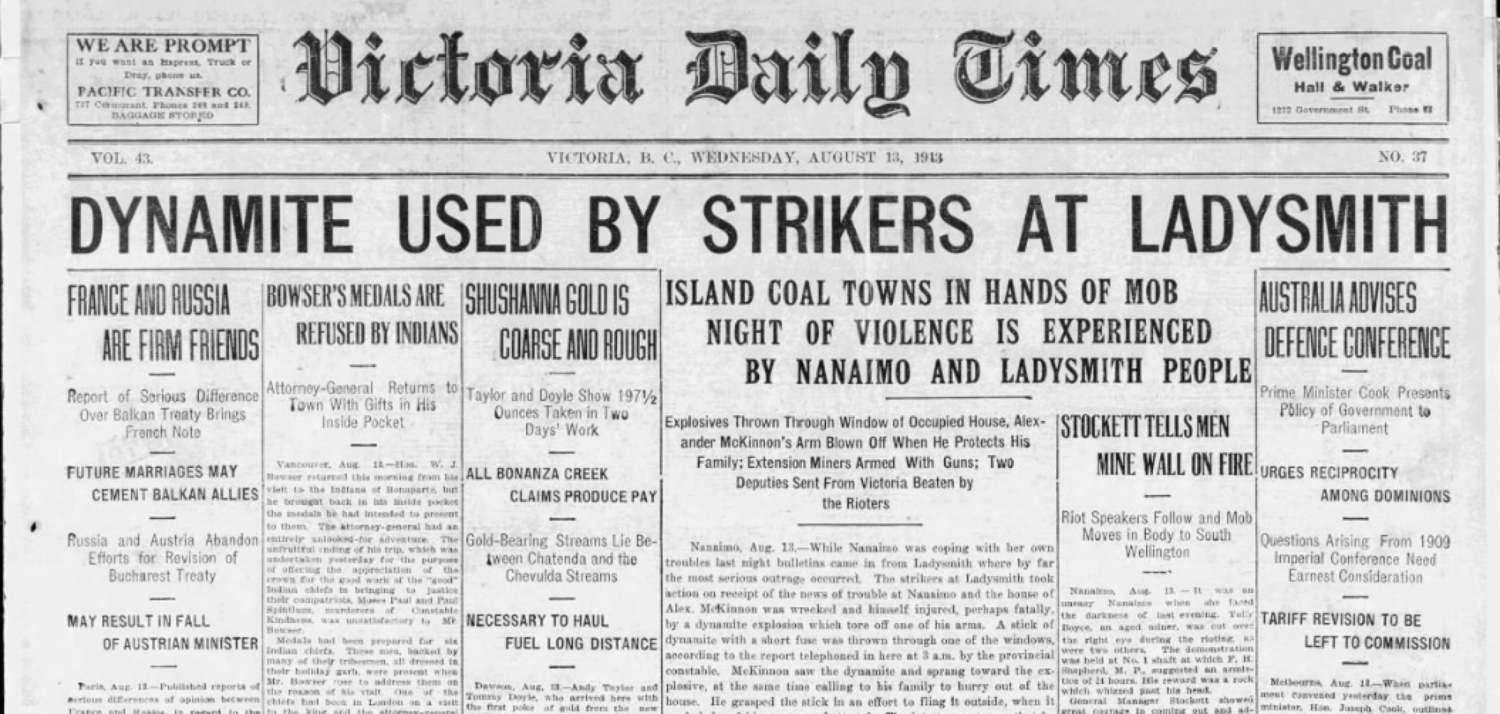Vancouver Island Coal Strike
Unsafe working conditions, low pay and union busting prompt long-lasting protests
Date: 1912
At the turn of the 20th century, Vancouver Island's coal mines were ripe for collective unrest. The collieries, the companies that ran the mines, kept wages stubbornly low, required their employees to work long hours, and, crucially, prevented them from joining powerful international unions like the United Mine Workers of America (UMWA). Companies like the Canadian Collieries, which owned the Cumberland mines, achieved these meagre working conditions by leveraging Asian labourers as competition with white workers and implementing internal policies that only recognized "company unions." Management also often neglected safety precautions. In the three decades leading up to 1912, nearly 400 men died in underground gas explosions on the island.
Miners and their families were getting worried. One miner named Oscar Mottishaw was vocal in his concerns about the unsafe working conditions and reported gas seeping from several locations in one of Canadian Collieries' mines. In response, the company dismissed him, deeming him a "trouble-maker and agitator." On Sept. 16, 1912, miners declared a holiday in protest of what they saw as an unjust firing — to which the colliery responded by locking them out, evicting their families from company housing, and recruiting strikebreakers from China, Britain, and the United States.
Despite shaky economic conditions, the protest continued for two years. The high level of solidarity was partly due to the class consciousness that had taken shape in the 1870s, with previous protests against the powerful Dunsmuir coal family. In addition, the UMWA sent strike pay to help the protestors financially. They also received support from their community and family members. Women found jobs to keep families afloat and maintain solidarity with the strikers. They joined picket lines and jeered strikebreakers alongside their husbands, brothers and fathers.
After 3,500 miners took part in strikes in the spring of 1913, the protests reached their peak the week of Aug. 12 when riots consumed the coal-mining towns of Extension, Nanaimo, Ladysmith, and South Wellington. The provincial government reacted quickly, sending in over 1,500 soldiers to the island communities — most detached to Nanaimo — and declared martial law. They arrested 213 men, tried 166, but only 50 went to jail.
In the summer of 1914, the Great Strike ended. Despite the consistent protests, the collieries had yielded little to the aggrieved miners: a new batch of miners had nearly replaced the workers who had left. The UMWA had withdrawn their strike pay, and attention now shifted to Europe. World War One had just begun. Most of the miners who had fought for their rights as workers now signed up to fight with the Canadian Expeditionary Force. Many of them would perish on the battlefield. Despite their years of fighting for better work conditions, union recognition would only come to Vancouver Island in 1938, more than two decades later.
Sources:
1. Bowen, Lynne. Vancouver Island Coal Strike. The Canadian Encyclopedia, 7 Feb. 2006, www.thecanadianencyclopedia.ca/en/article/vancouver-island-coal-strike.
2. Hinde, John R. "STOUT LADIES AND AMAZONS:" Women in the British Columbia Coal-Mining Community of Ladysmith, 1912-14. BC Studies, Summer 1997, ojs.library.ubc.ca/index.php/bcstudies/article/download/1711/1757/7052.
3. Ronson, Jaqueline. Remembering Ladysmith's Great Coal Mining Strike. The Discourse, 25 Feb. 2020, thediscourse.ca/cowichan-valley/ladysmith-coal-mining-strike.
4. Silverman, Peter. “The Militia and the Coal Miners' Strike.” Legion Magazine, 25 July 2016, legionmagazine.com/en/2016/07/the-militia-and-the-coal-miners-strike/.






